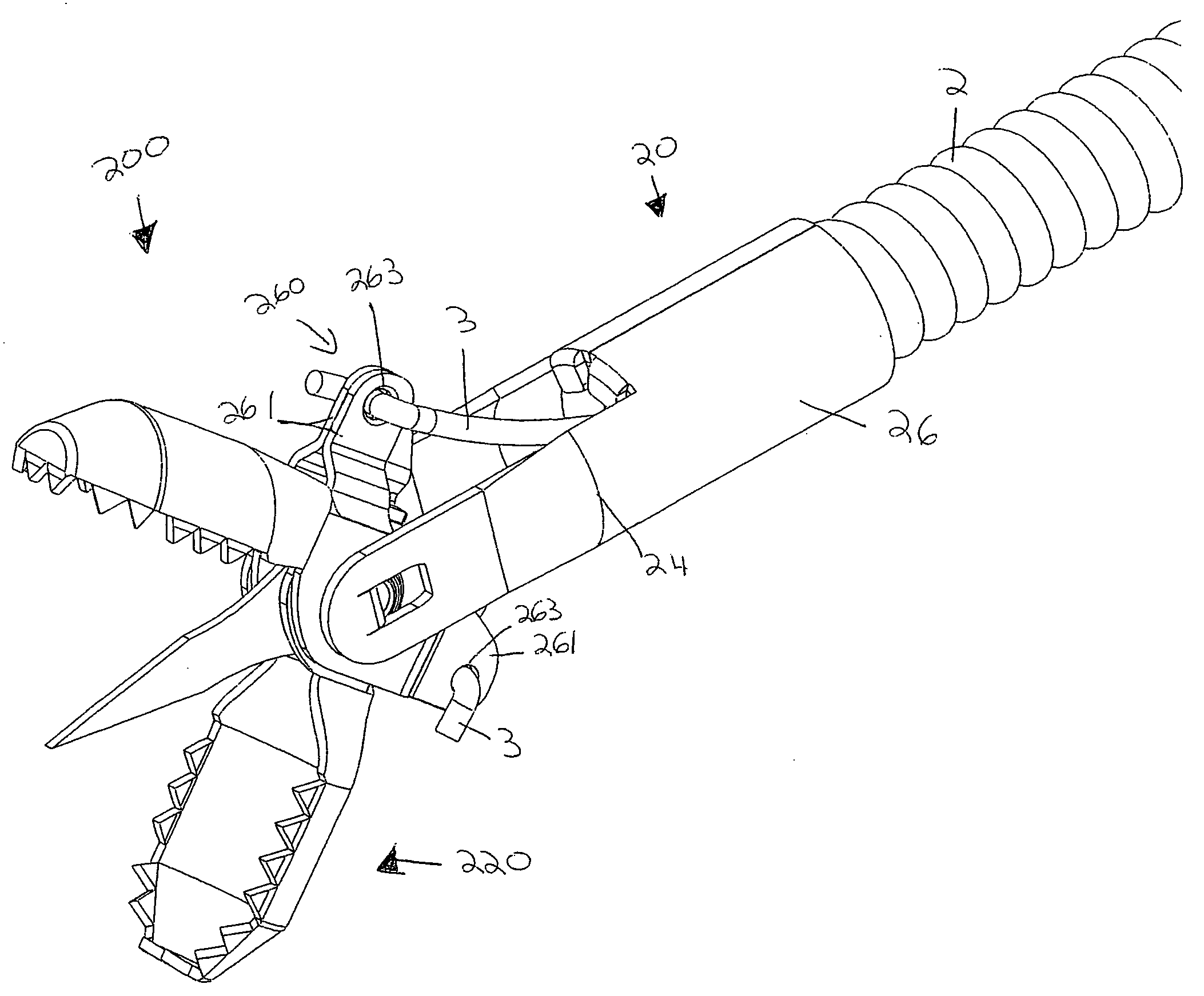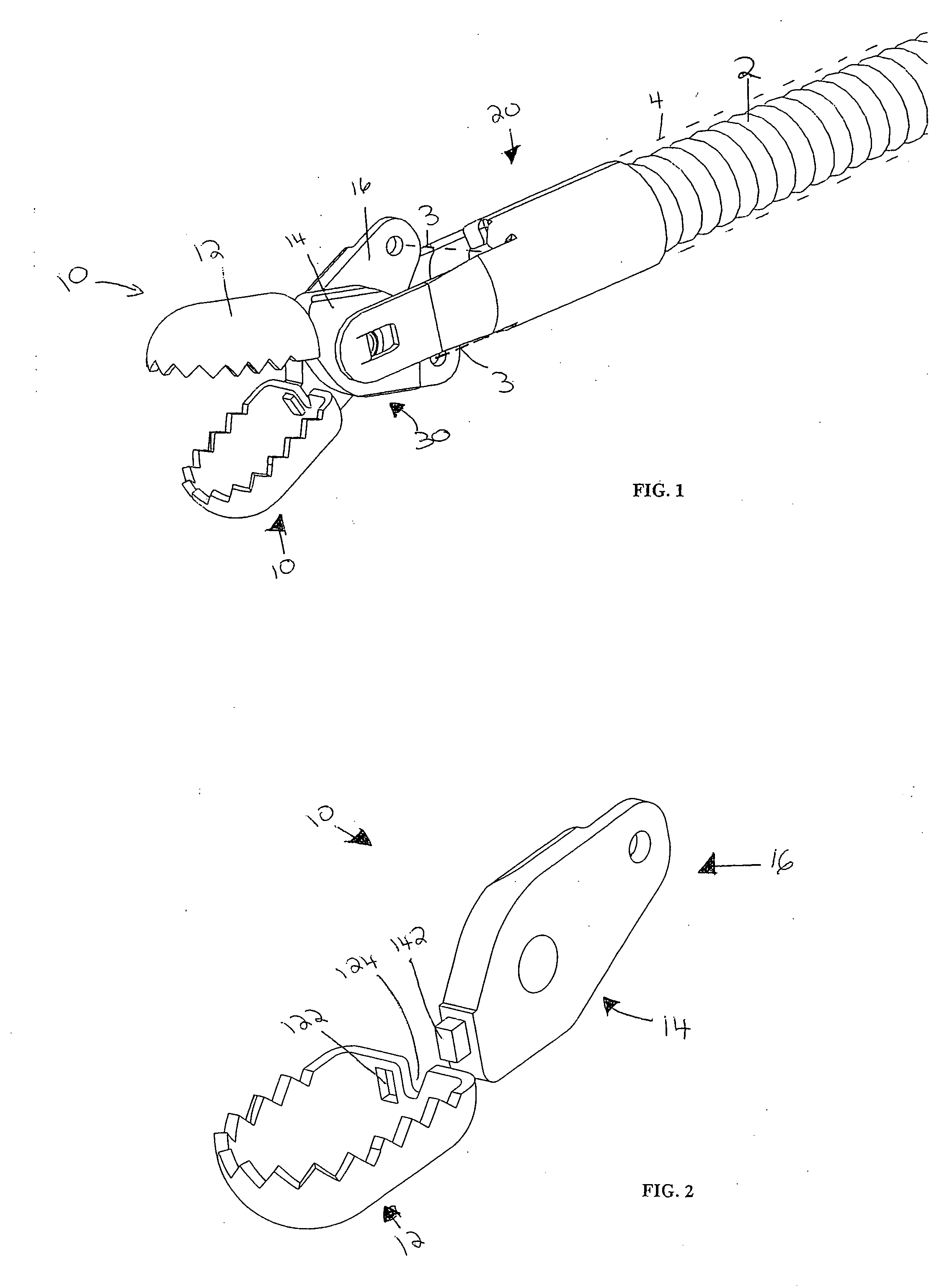End effector for surgical instrument, surgical instrument, and method for forming the end effector
a surgical instrument and end effector technology, applied in the field of end effectors for surgical instruments, can solve the problems of complicated construction of devices, high cost, and high cost of machining, and achieve the effect of improving grasping ability, manufacturing efficiently and inexpensively
- Summary
- Abstract
- Description
- Claims
- Application Information
AI Technical Summary
Benefits of technology
Problems solved by technology
Method used
Image
Examples
first embodiment
[0216] FIGS. 27 to 29, 68, and 69 show the actuating wires or rods 3. In that embodiment, the wires 3 extend longitudinally up to the control rod port 163, 263, bend ninety degrees to enter into the control rod port 163, 263, extend through both the control rod ports 163, 263 of each of the two parallel plates 161, 261 along an orthogonal portion 32, exit the control rod port 163, 263 of the second parallel plate 161, 261, and bend ninety degrees to, thereby, engage the tang 160, 260 without the possibility of falling out of the ports 163, 263. To actuate the forceps, a force is exerted on the rod 3. The S-bend of the wire 3 significantly reduces any possibility that the wire 3 becomes dislodged from the tang 160, 260.
[0217] FIGS. 74 to 79 illustrate another embodiment 360 of the tangs 160, 260 and second and third embodiments of the wires 3 shown in the previous figures.
[0218] As set forth above, the wire 3 is attached to the jaw 10 to allow the wire 3 to freely rotate and to allo...
third embodiment
[0222] To attach the wire 3 to the jaw 10, the wire 3 extends longitudinally from the proximal end of the forceps device up to the control rod port 363 along a first portion 31, bends ninety degrees to enter into the control rod port 363, extends through both the control rod ports 363 of each of the two parallel plates 361 along an orthogonal portion 32, exits the control rod port 363 of the second parallel plate 361, and ends. This third embodiment of the wire 3 similarly reduces any possibility that the wire 3 becomes dislodged from the tang 360.
[0223] To effect the reduction of unintended wire 3 removal, one plate 361 of the two parallel plates 161, 261 has a hooded wire support 365. The hooded wire support 365 is configured provide support to the wire 3 and, thereby prevent removal of the wire 3 from the tang 360. The hooded wire support 365 is substantially U-shaped in cross-section and, therefore, has a vertical first leg 366, a horizontal portion 367, and a vertical second le...
PUM
 Login to View More
Login to View More Abstract
Description
Claims
Application Information
 Login to View More
Login to View More - R&D
- Intellectual Property
- Life Sciences
- Materials
- Tech Scout
- Unparalleled Data Quality
- Higher Quality Content
- 60% Fewer Hallucinations
Browse by: Latest US Patents, China's latest patents, Technical Efficacy Thesaurus, Application Domain, Technology Topic, Popular Technical Reports.
© 2025 PatSnap. All rights reserved.Legal|Privacy policy|Modern Slavery Act Transparency Statement|Sitemap|About US| Contact US: help@patsnap.com



